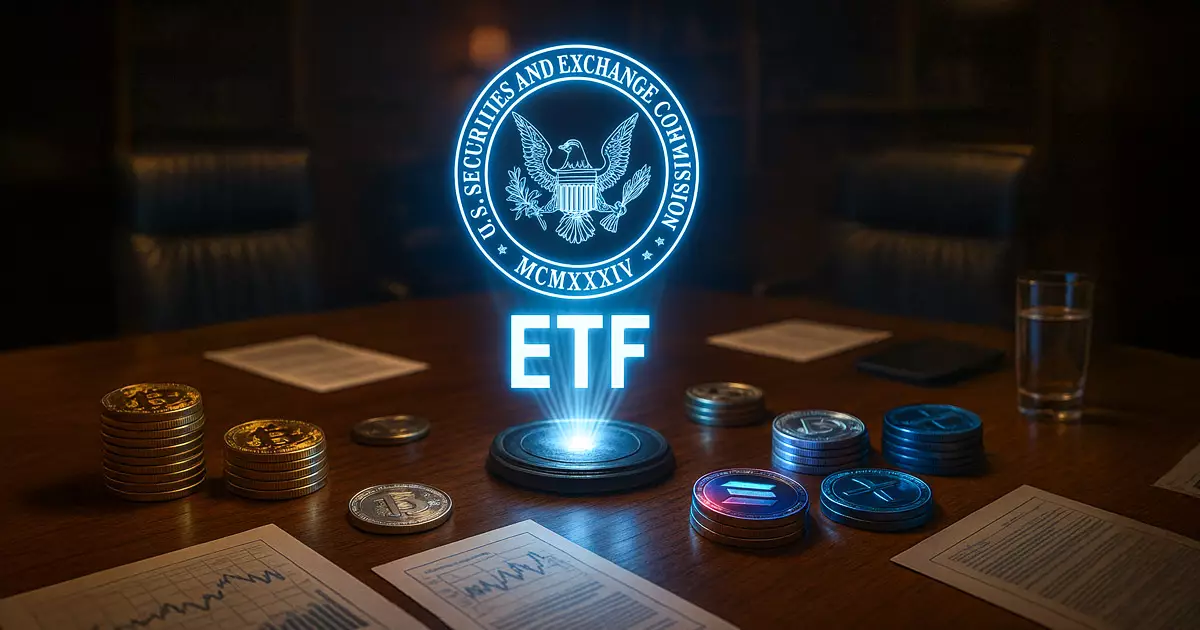The recent postponement of nine crypto ETF applications by the SEC highlights a troubling trend: regulatory dithering under the guise of safeguarding investors. While some may interpret these delays as necessary caution, they often serve as a smokescreen for bureaucratic inertia and indecision. The SEC’s meticulous slow-walking stymies innovation and discourages legitimate market players from advancing in a space that is already volatile and fraught with uncertainty. Instead of fostering a stable environment conducive to growth, these repeated postponements convey a message that the regulatory body prefers to sit on the sidelines, waiting for a perfect moment that may never come.
This approach inherently undermines investor confidence and sends mixed signals to the market. Crypto markets are inherently high-risk; investors are aware of this, yet they seek clarity and structured guidelines that legitimize the space. The SEC’s delay, therefore, feels less like prudence and more like an exercise in control, aimed at maintaining traditional financial dominance rather than supporting innovation. If safeguard measures are necessary, they should be transparent and consistent—not handled through prolonged, opaque reviews that seem more about preventing crypto integration than fostering it.
Framework Over Contentious Case-by-Case Reviews
The SEC’s proposed shift towards a standardized framework for crypto ETF approval signals a recognition that the current case-by-case process hampers market development. Designing clear, predefined standards—such as minimum market caps and liquidity thresholds—could be a good thing. It would create a predictable environment where responsible sponsors know what is required to bring new products to market. However, the devil is in the details. The idea of a “generic listing standard” risks turning regulatory guidelines into a rubber stamp unless it rigorously protects investors.
The problem lies in whether such standards are truly designed to safeguard or merely to delay. The delay tactics—like waiting for the development of a comprehensive digital asset regulation—may be an excuse to stifle emerging competition under the false pretext of investor protection. It’s worth questioning whether this regulatory approach is designed to genuinely foster technological advancement or to shield legacy financial institutions from disruptive innovations. A transparent review process, coupled with well-defined standards, would better serve investors and innovators alike. But right now, it seems the SEC’s overarching goal is control rather than clarity.
Who Truly Benefits from More Regulation and Delay?
A deeper analysis reveals that the de facto consequence of these delays favors entrenched financial interests and the status quo. Traditional asset managers and legacy exchanges are hesitant to see their dominance challenged by the fast-moving crypto landscape; hence, they may indirectly benefit from a protracted regulatory process that keeps new competitors at bay. A clear, streamlined approval system could invigorate the market, attract more institutional investors, and legitimize digital assets as mainstream financial instruments.
Yet, the SEC’s cautious stance risks disenfranchising ordinary investors who crave legitimate pathways into the crypto economy. Instead of enabling growth, excessive delays and opaque standards fuel speculation and frustration. It’s not enough for regulators to merely string along the industry in hopes of “safer” exploration; decisive action with transparent rules would demonstrate a commitment to responsible innovation. The emerging crypto universe deserves a regulatory environment that balances risk with opportunity—something the current delays unfortunately do not provide. Until then, the market remains hostage to slow-moving bureaucratic maneuvers that do little to foster genuine progress.

